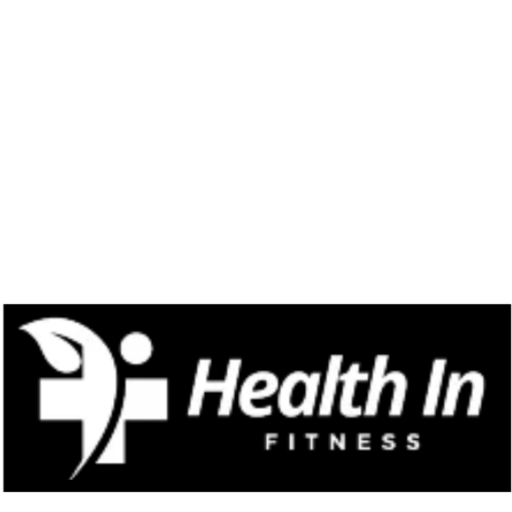
Cardiovascular health is a vital aspect of overall wellness, and regular cardio exercise is one of the most effective ways to keep your heart healthy. Whether you’re looking to improve endurance, reduce the risk of heart disease, or simply enhance your overall fitness, incorporating cardio exercises into your daily routine can provide profound benefits. In this post, we’ll dive deep into the top 5 cardio exercises that will boost your heart health and give you the tools to build a heart-healthy lifestyle.
Table of Contents
- Importance of Cardiovascular Health
- How Cardio Exercises Benefit Your Heart
- The Top 5 Cardio Exercises to Boost Heart Health
- Walking
- Running
- Cycling
- Swimming
- Jump Rope
- How to Incorporate These Cardio Exercises into Your Routine
- Beginner, Intermediate, and Advanced Workout Plans
- Common Cardio Myths Debunked
- How to Measure Cardiovascular Progress
- Nutrition Tips to Support Heart Health
- The Mental Health Benefits of Cardio
- Frequently Asked Questions about Cardio and Heart Health
- Conclusion: Commit to a Heart-Healthy Lifestyle
1. Importance of Cardiovascular Health
Your heart is a muscle, and like any muscle, it needs regular exercise to stay strong and healthy. Cardiovascular diseases are one of the leading causes of death globally, but the good news is that many risk factors are preventable with lifestyle changes, particularly regular exercise.
- Prevent Heart Disease: Cardiovascular exercise strengthens your heart, allowing it to pump blood more efficiently, which lowers blood pressure and reduces the risk of heart disease.
- Weight Management: Regular cardio exercise helps manage weight, which is crucial because being overweight increases the risk of cardiovascular diseases.
- Improve Circulation: Cardio workouts improve blood circulation, which ensures that all organs, including the heart, receive sufficient oxygen and nutrients.
- Lower Cholesterol Levels: Exercise helps maintain healthy cholesterol levels by increasing good HDL cholesterol and reducing bad LDL cholesterol, which can clog arteries.
2. How Cardio Exercises Benefit Your Heart
Cardio, short for cardiovascular exercise, refers to any activity that raises your heart rate and increases blood circulation. These exercises work to strengthen your heart and lungs, making them more efficient. Here’s how cardio benefits your heart:
A. Strengthening the Heart Muscle
As a muscle, the heart needs to be exercised regularly to become stronger. Cardio exercises challenge your heart by increasing your heart rate. Over time, this strengthens the heart muscle, allowing it to pump more blood with each beat. A stronger heart means that your body gets more oxygen and nutrients with less effort.
B. Lowering Blood Pressure
Regular cardiovascular exercise helps lower your blood pressure by improving the efficiency of the heart and blood vessels. High blood pressure, or hypertension, is a significant risk factor for heart disease. By keeping your blood pressure in a healthy range, you reduce the stress on your heart and arteries.
C. Reducing Cholesterol Levels
Cardio exercise can help reduce LDL cholesterol, the “bad” cholesterol that contributes to plaque buildup in your arteries, and increase HDL cholesterol, the “good” cholesterol that helps remove LDL from the bloodstream. Maintaining healthy cholesterol levels reduces the risk of atherosclerosis, which can lead to heart attacks and strokes.
D. Promoting Better Circulation
Cardio improves circulation by increasing the amount of blood and oxygen that reaches your muscles during exercise. This not only benefits your heart but also enhances the function of all your organs and tissues, promoting overall health.
E. Boosting Lung Capacity
Cardio exercise also improves your lung capacity and efficiency, enabling you to take in more oxygen with each breath. As your lung capacity improves, your endurance increases, allowing you to sustain higher levels of activity for longer periods.
3. The Top 5 Cardio Exercises to Boost Heart Health
The following cardio exercises are among the best for improving heart health. They vary in intensity, so whether you’re a beginner or a seasoned athlete, there’s an option here for you.
A. Walking
Walking is one of the simplest yet most effective forms of cardiovascular exercise. It’s accessible to almost everyone and can be easily incorporated into your daily routine. Walking at a brisk pace elevates your heart rate, strengthens your heart, and improves overall circulation.
- How to get started: Start by walking for 30 minutes a day, five times a week. Aim for a pace where you can talk but not sing. As your endurance builds, increase your walking time or speed.
- Benefits: Walking is low-impact, making it suitable for people of all fitness levels, especially those with joint issues or who are just starting their fitness journey.
Progression Ideas for Walking:
- Add hills or inclines to increase the intensity of your walks.
- Incorporate intervals by walking briskly for 2 minutes, then at a slower pace for 1 minute.
- Try power walking, which involves using exaggerated arm movements to engage more muscles and increase your calorie burn.
B. Running
Running is a high-intensity cardio exercise that provides significant benefits for heart health. It burns more calories than walking and helps improve endurance, cardiovascular capacity, and mental clarity.
- How to get started: Beginners can start with a walk/run method. Alternate between running for 1 minute and walking for 2 minutes until you can sustain longer runs.
- Benefits: Running improves heart efficiency, lung capacity, and burns calories at a higher rate than lower-impact activities.
Progression Ideas for Running:
- Incorporate interval sprints: Alternate between 30 seconds of sprinting and 1 minute of jogging.
- Add distance gradually to build endurance—aim to increase your weekly mileage by 10%.
- Run on varied terrain, such as trails or hills, to challenge your cardiovascular system and leg muscles.
C. Cycling
Cycling is a great cardiovascular exercise that builds endurance and strengthens the legs while being gentle on the joints. Whether you’re cycling outdoors or using a stationary bike, this exercise is highly effective at improving heart health.
- How to get started: Aim to cycle for 30-60 minutes at a moderate pace, 3-5 times per week. If using a stationary bike, adjust the resistance to increase intensity.
- Benefits: Cycling strengthens the heart and lungs while improving lower body strength and coordination.
Progression Ideas for Cycling:
- Incorporate hill climbs or increase the resistance on a stationary bike to build strength.
- Try interval training by alternating between high-intensity sprints and moderate cycling.
- Join a cycling group or take a spin class to add a social and motivational aspect to your workout.
D. Swimming
Swimming is an excellent full-body workout that is easy on the joints but still provides an intense cardiovascular workout. It engages multiple muscle groups while improving lung capacity, endurance, and heart health.
- How to get started: Start by swimming for 20-30 minutes, gradually increasing your time in the pool. Use different strokes, such as freestyle, backstroke, and breaststroke, to target different muscle groups.
- Benefits: Swimming is a low-impact exercise, making it ideal for people with joint pain or arthritis. It also builds endurance and improves heart function.
Progression Ideas for Swimming:
- Increase the number of laps or distance you swim each week.
- Incorporate interval training by swimming at a high intensity for one lap, then recovering for a lap at a slower pace.
- Try resistance swimming by using a kickboard or swim fins to add intensity.
E. Jump Rope
Jumping rope is a simple yet powerful cardiovascular exercise that burns calories, improves coordination, and strengthens the heart. It’s easy to do at home or outdoors and requires very little space or equipment.
- How to get started: Start with short sessions of 1-2 minutes, gradually increasing your jump time as you build stamina. Aim for a total of 10-15 minutes of jumping, which can be broken into intervals if necessary.
- Benefits: Jumping rope improves cardiovascular fitness, coordination, and agility while strengthening the legs, arms, and core.
Progression Ideas for Jump Rope:
- Try double unders, where the rope passes under your feet twice in one jump, for a more advanced challenge.
- Incorporate interval training by jumping for 30 seconds at a fast pace, followed by 30 seconds of rest.
- Add variations like criss-crosses or alternating feet to challenge your coordination and agility.
4. How to Incorporate These Cardio Exercises into Your Routine
Consistency is key when it comes to reaping the heart-health benefits of cardio exercise. To create a well-rounded fitness routine, aim to incorporate a variety of the exercises mentioned above into your weekly schedule. Here’s how to get started:
- Set Realistic Goals: Begin with small, achievable goals, such as 30 minutes of walking or running five times a week. Gradually increase the intensity and duration as you build endurance.
- Mix It Up: Variety is essential to prevent boredom and plateauing. Alternate between different cardio exercises throughout the week to challenge your body in new ways and keep things exciting.
- Track Your Progress: Keep a log of your workouts, including the time, distance, or calories burned during each session. This can help you monitor your progress and stay motivated.
- Include Rest Days: Rest is just as important as exercise when it comes to building cardiovascular endurance. Incorporate at least one or two rest days into your weekly routine to allow your body to recover.
5. Beginner, Intermediate, and Advanced Workout Plans
Creating a cardio routine that aligns with your fitness level is crucial to prevent injury and ensure steady progress. Below are sample workout plans for different fitness levels:
A. Beginner Workout Plan
For individuals who are just starting their fitness journey:
- Monday: 30-minute brisk walk
- Wednesday: 20-minute cycle at moderate intensity
- Friday: 30 minutes of swimming
- Sunday: Rest day or light stretching
B. Intermediate Workout Plan
For those with some experience:
- Monday: 45-minute run with intervals (alternate between 2 minutes of running and 1 minute of walking)
- Tuesday: 30-minute jump rope session
- Thursday: 1-hour swim session, focusing on endurance
- Saturday: 45-minute outdoor cycling
C. Advanced Workout Plan
For seasoned athletes:
- Monday: 1-hour long-distance run
- Tuesday: 30 minutes of HIIT cycling (1 minute sprint, 2 minutes recovery)
- Wednesday: 45-minute swimming session with intervals
- Friday: 1-hour high-intensity jump rope circuit (3 sets of 10 minutes with rest in between)
- Sunday: 1-hour outdoor hill cycling
6. Common Cardio Myths Debunked
There are several misconceptions about cardio exercise that may prevent individuals from fully benefiting from their workouts. Let’s debunk some of the most common myths:
Myth 1: More Cardio Is Always Better
While cardio is essential for heart health, too much can lead to burnout, muscle loss, and overuse injuries. Balance your cardio with strength training and rest days for optimal results.
Myth 2: Cardio Alone Will Help You Lose Weight
Cardio is an important part of weight loss, but it should be combined with a balanced diet and strength training for best results. Focusing solely on cardio may cause muscle loss, leading to a lower metabolic rate.
Myth 3: You Must Run to Improve Heart Health
While running is an excellent form of cardio, it’s not the only option. Swimming, cycling, and walking are all effective ways to improve heart health without the impact that running places on your joints.
7. How to Measure Cardiovascular Progress
Tracking your cardiovascular progress is key to staying motivated and ensuring that your heart health is improving over time. Here are a few ways to measure your progress:
A. Heart Rate Monitoring
Using a heart rate monitor or fitness tracker can help you gauge the intensity of your workouts. Your resting heart rate will decrease as your cardiovascular fitness improves.
B. VO2 Max
VO2 max is a measure of the maximum amount of oxygen your body can use during exercise. Many fitness trackers provide an estimate of your VO2 max, which is a good indicator of cardiovascular fitness.
C. Distance and Time
Tracking how far or how long you can walk, run, cycle, or swim is another great way to measure progress. As your endurance improves, you’ll notice you can cover more distance in less time.
8. Nutrition Tips to Support Heart Health
Cardio exercise is only part of the equation for improving heart health. Nutrition plays a crucial role as well. Here are a few dietary tips to support your cardiovascular health:
A. Prioritize Heart-Healthy Fats
Incorporate healthy fats like omega-3 fatty acids found in fish, flaxseeds, and walnuts. These fats help reduce inflammation and lower the risk of heart disease.
B. Eat Plenty of Fiber
Fiber, particularly soluble fiber, helps lower cholesterol levels. Foods high in fiber include oats, beans, fruits, and vegetables.
C. Limit Processed Sugars
Excessive sugar intake can lead to weight gain, insulin resistance, and heart disease. Focus on whole foods like fruits and vegetables, and limit sugary beverages and snacks.
D. Stay Hydrated
Water is essential for all bodily functions, including circulation. Drink plenty of water throughout the day, especially before and after your cardio workouts.
9. The Mental Health Benefits of Cardio
In addition to boosting heart health, cardio exercise offers profound mental health benefits. Regular cardio exercise helps reduce anxiety and depression by releasing endorphins, the brain’s natural mood enhancers.
A. Reducing Stress
Cardio exercise lowers levels of stress hormones like cortisol, helping you feel calmer and more relaxed. It also promotes better sleep, which further reduces stress.
B. Boosting Self-Esteem
Achieving fitness goals, whether it’s running a longer distance or swimming faster, can boost your confidence and sense of accomplishment.
C. Improving Cognitive Function
Studies show that regular cardio exercise enhances brain function and memory. It increases blood flow to the brain, which supports cognitive function and reduces the risk of dementia.
10. Frequently Asked Questions about Cardio and Heart Health
Q1: How often should I do cardio to improve heart health?
For optimal heart health, aim for at least 150 minutes of moderate-intensity cardio or 75 minutes of vigorous cardio per week, spread across several days.
Q2: Can I do cardio every day?
Yes, but be mindful of overtraining. Incorporate rest days or alternate between low-impact cardio (like walking) and more intense forms of exercise (like running or swimming).
Q3: Is high-intensity interval training (HIIT) good for heart health?
Yes, HIIT is excellent for heart health as it challenges your cardiovascular system and improves endurance. However, it’s important to balance high-intensity workouts with recovery days.
Q4: Can walking really improve heart health?
Absolutely. Walking is a low-impact but highly effective form of cardio exercise that improves circulation, reduces blood pressure, and lowers cholesterol levels.
11. How to Maximize the Benefits of These Top 5 Cardio Exercises to Boost Heart Health
To ensure that you are getting the most out of your cardio routine, it’s essential to follow a few key principles. Whether you’re a beginner or an experienced fitness enthusiast, these tips will help you maximize the cardiovascular and overall health benefits of the top 5 cardio exercises that boost heart health. Remember, consistency is key, but equally important is performing each exercise correctly and progressively to continually challenge your body.
A. Focus on Form and Posture
Maintaining proper form is crucial to avoid injury and ensure that you are targeting the correct muscles during your cardio workouts. This is especially true for exercises like running, swimming, and jump rope, where poor form can lead to joint or muscle strain.
- Walking: Keep your shoulders relaxed and your head aligned with your spine. Your arms should swing naturally, and your steps should be light and steady.
- Running: Avoid slouching or leaning too far forward. Keep your core engaged, shoulders down, and land on the middle of your foot for better impact distribution.
- Cycling: Maintain a slight bend in your elbows and avoid overextending your back. Adjust the seat height so your knees are slightly bent when the pedals are at the lowest point.
- Swimming: Focus on smooth, controlled movements. Keep your core engaged, and ensure that your breathing is timed correctly with your strokes.
- Jump Rope: Stand tall with your core engaged and elbows close to your body. Keep your knees slightly bent and use your wrists to turn the rope rather than your arms.
By focusing on good form, you’ll not only enhance your cardiovascular workout but also engage your muscles more efficiently, leading to better results.
B. Gradually Increase Intensity
While it’s tempting to jump straight into intense cardio sessions, especially if you’re feeling motivated, it’s essential to build intensity gradually. This principle applies to all five of the top cardio exercises to boost heart health.
- Walking: Start with 20-30 minutes of brisk walking and gradually increase the duration or speed. Once you’re comfortable, incorporate interval training by alternating between 1-2 minutes of brisk walking and 30 seconds of power walking or light jogging.
- Running: Increase your distance by 10% each week to avoid injury. Introduce sprints or uphill running to challenge your cardiovascular system further.
- Cycling: Use different resistance levels on a stationary bike or tackle hills during outdoor rides to challenge your muscles and improve heart health.
- Swimming: Gradually increase your lap count or the duration of your swim. Incorporate different strokes to engage a wider variety of muscles and elevate your heart rate.
- Jump Rope: Begin with shorter sessions and work your way up to longer intervals. You can also add variations, like double unders or criss-cross jumps, to make your routine more challenging.
By gradually increasing the intensity, you’re allowing your heart and muscles time to adapt, which reduces the risk of burnout or injury and maximizes the cardiovascular benefits.
C. Combine Cardio with Strength Training
While the top 5 cardio exercises are excellent for boosting heart health, incorporating strength training can further enhance your fitness. Strength training helps build lean muscle mass, which supports cardiovascular exercise by increasing endurance and improving metabolism.
For example:
- After your cardio session, perform bodyweight exercises like squats, lunges, push-ups, and planks to target major muscle groups.
- Incorporate resistance bands or light dumbbells into your cardio routine to turn your workout into a hybrid strength-cardio session.
- Alternate between days dedicated to cardio and strength training, allowing your body to recover and rebuild muscle tissue.
Combining cardio and strength training not only improves heart health but also enhances overall fitness, helping you become stronger and more resilient.
D. Monitor Your Heart Rate
One of the best ways to measure the effectiveness of your cardio workout is to monitor your heart rate. Keeping track of your heart rate during exercise ensures that you’re working at the right intensity for cardiovascular health improvements.
- Target Heart Rate Zone: For moderate-intensity exercise, aim for 50-70% of your maximum heart rate. For vigorous-intensity cardio, aim for 70-85%.
- Resting Heart Rate: A lower resting heart rate generally indicates a healthier heart. As you progress with regular cardio workouts, you should notice a decrease in your resting heart rate over time.
Using a fitness tracker or a heart rate monitor can help you stay in your target heart rate zone during each of the top 5 cardio exercises, ensuring that you’re working hard enough to benefit your heart.
E. Fuel Your Body with the Right Nutrition: Top 5 Cardio Exercises to Boost Heart Health
Nutrition plays a critical role in supporting your cardiovascular health and improving performance in the top 5 cardio exercises. A well-balanced diet will provide the energy your body needs to complete cardio workouts and support recovery afterward.
- Carbohydrates: Carbs are your body’s primary source of energy during cardio exercises. Choose complex carbs like whole grains, fruits, and vegetables to fuel your workouts and maintain steady blood sugar levels.
- Proteins: Protein is essential for muscle repair and recovery, especially after high-intensity cardio. Include lean protein sources such as chicken, fish, tofu, and legumes in your diet.
- Healthy Fats: Omega-3 fatty acids, found in foods like salmon, flaxseeds, and walnuts, support heart health and reduce inflammation.
- Hydration: Staying hydrated is crucial for cardiovascular health. Drink water before, during, and after your cardio sessions to support circulation and prevent dehydration.
By fueling your body with the right nutrients, you’ll not only enhance your cardiovascular performance but also support overall heart health.
12. Common Mistakes to Avoid in Cardio Workouts
While the top 5 cardio exercises are highly effective, it’s important to avoid common mistakes that can hinder your progress or lead to injury.
A. Overtraining
While cardio exercise is great for heart health, too much of it can lead to overtraining, which can result in fatigue, muscle soreness, and increased risk of injury. It’s crucial to listen to your body and incorporate rest days into your routine.
- Solution: Aim for 150 minutes of moderate-intensity cardio per week or 75 minutes of high-intensity cardio, along with at least one or two rest days.
B. Skipping Warm-Ups and Cool-Downs
Skipping warm-ups and cool-downs can result in muscle stiffness and an increased risk of injury.
- Warm-Up: Start each session with a 5-10 minute warm-up to gradually increase your heart rate and loosen your muscles. This can include light jogging, dynamic stretching, or jumping jacks.
- Cool-Down: End your workout with a cool-down that includes light stretching to relax your muscles and gradually lower your heart rate.
C. Ignoring Recovery
Rest and recovery are essential components of any fitness routine. Ignoring recovery can lead to burnout and decreased performance.
- Solution: Make sure to incorporate rest days, prioritize sleep, and include activities like yoga or light stretching to enhance recovery.
D. Doing the Same Routine Repeatedly
While consistency is important, doing the same cardio workout over and over can lead to plateaus.
- Solution: Rotate between the top 5 cardio exercises to boost heart health, or add variety within each workout by incorporating interval training, different terrains, or resistance.
Conclusion: Commit to a Heart-Healthy Lifestyle with Cardio Workouts
Incorporating the top 5 cardio exercises into your fitness routine is one of the best things you can do for your heart health. By focusing on walking, running, cycling, swimming, and jumping rope, you’ll strengthen your heart, improve circulation, lower cholesterol, and boost overall cardiovascular fitness. More information available on Healthline here learn more about Top 5 Cardio Exercises to Boost Heart Health.
The key to success lies in consistency, proper form, and progressive intensity. As you continue on your fitness journey, make sure to monitor your heart rate, fuel your body with nutritious foods, and allow for rest and recovery. With dedication, you’ll reap the benefits of a stronger, healthier heart and enjoy a longer, more active life.
Support Our Work
If you’ve found this guide on the top cardio exercises for heart health helpful, please consider supporting us by shopping through our Amazon affiliate link. Your purchases help us continue to provide valuable content at no additional cost to you. Thank you for your support!











